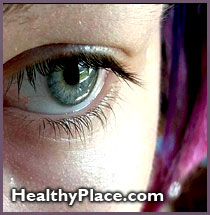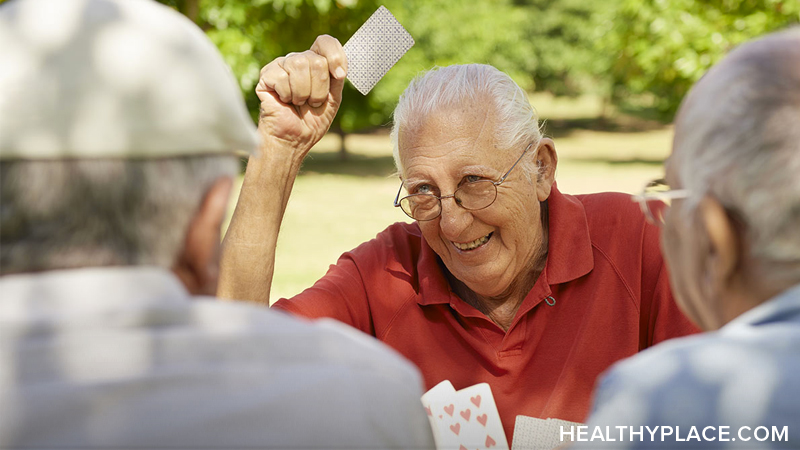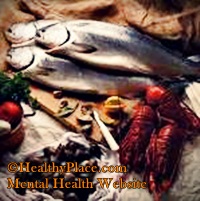Books that offer support and insight into healing, wholeness, personal growth, psychotherapy and more.

"I suggest that the only books that influence us are those for which we are ready, and which have gone a little further down our particular path than we have gone ourselves."
-E. M. Forster
For as long as I can remember, I've always loved books -- they have taught, comforted, entertained, and helped to create me. Below is a list of books that I have found to be particularly valuable. By no means is this a complete list. I have loved many books, far too many to include on this page.
Many who have visited this page have recommended books to me and I thank you for sharing your discoveries.Several kind folks (including my wonderful webmaster at 1k.com) have also suggested that I place a link to Amazon in order to make ordering simple for those who'd like to purchase (as well as to recoup some of the expenses of maintaining this website.) Finally, I've heeded their advice (if you were one of those who made the suggestion -thanks for your patience with me.)
If you would like more information about any one of the books listed that has an "order now" link beside it, just click on the link and you'll be able to read reviews and even book samples in some cases. I present to you the following:
INDEX:
Aging
"Age Happens: The Best Quotes About Growing Older" edited by Bruce Lansky Order Today!
"Aging, Spirituality, and Religion: A Handbook" edited by Melvin Kimble Order Today!
"From Age-Ing to Sage-Ing" by Zalman Shalomi-Schachter Order Today!
"Listening To Midlife: Turning Your Crisis into a Quest" by Mark Gerzon Order Today!
"New Passages: Mapping Your Life Across Time" by Gail Sheehy Order Today!
"The Green Pharmacy : New Discoveries in Herbal Remedies for Common Diseases and Conditions from the World's Foremost Authority on Healing Herbs by James A. Duke
"Women as Elders: Images, Visions and Issues" edited by Marilyn Bell Order Today!
"The Measure of My Days" by Florida Scott-Maxwell Order Today!
"Why We Age : What Science Is Discovering About the Body's Journey Throughout Life" by Steven N. Austad Order Today!
"1003 Great Things About Getting Older" edited by Lisa Birnbach Order Today!
"The Girls with the Grandmmother Faces: A Celebration of Life's Potential for Those Over Fifty-five" by Frances Weaver Order Today!
"The Last Gift of Time: LIfe Beyond Sixty" by Carolyn G. Heilbrun Order Today!
"Be an Outrageous Older Woman" by Ruth Harriet Jacobs Order Today!
For Children and Young Adults
"Glory! To the Flowers by Maggie Steincrohn Davis Order Today!
"A Ring of Endless Light" by Madeleine L' Engle Order Today!
"Baby Alicia is Dying" by Lurlene McDaniel Order Today!
"Charlottes Web" by E.B. White Order Today!
"Chicken Soup for the Teenage Soul" by Jack Canfield Order Today!
"Emily of New Moon" by Lucy Maud Montgomery Order Today!
"Goodnight Moon" by Margaret Wise Brown Order Today!
"Hester in the Wild" by Sandra Boynton (currently out of print)
"Island of the Blue Dolphins" by Scott O'Dell Order Today!
"Miss Rumphius" by Barbara Cooney Order Today!
"The Black Stallion" by Walter Farley Order Today!
"The Giving Tree" by Shel Silverstein Order Today!
"The Secret Garden" by Frances Hodgson Burnett Order Today!
"A Little Princess" by Frances Hodgson Burnett and Tasha Tudor Order Today!
Environment
"The Lost Gospel of the Earth: A Call for Renewing Nature, Spirit, and Politics" by Tom Hayden Order Today!
"Earth in the Balance: Ecology and the Human Spirit" by Al Gore Order Today!
"Building the Green Movement" by Rudolph Bahro (out of print)
"Hope, Human and Wild: True Stories of Living Lightly on the Earth" by Bill McKibben Order Today!
"Heaven is Under Our Feet" edited by Don Henley and David Marsh Order Today!
"50 Simple Things You Can Do to Save the Earth" by the Earthworks Group (out of print)
"50 Simple Things Your Business Can Do to Save the Earth" by The Earthworks Group Order Today!
"Man and Nature" by George Perkins Marsh (out of print)
"Muddling Toward Frugality" by Warren Johnson (out of print)
"The Green Lifestyle Handbook: 1001 Ways You Can Heal the Earth" edited by Jeremy Rifkin (out of print)
"The Healing Earth: Nature's Medicine For the Troubled Soul" by Philip Sutton Chard (out of print)
"The Power of Place: How our Surroundings Shape our Thoughts, Emotions and Actions" by Winnifred Gallagher Order Today!
"The Wilderness Reader" edited by Frank Bergon
Health and Healing
"A Different Kind of Healing" by Oscar Janiger and Philip Goldberg (out of print)
"Healing into Life and Death" by Stephen Levine Order Today!
"Love, Medicine and Miracles" by Bernie Seigel Order Today!
"Living With Chronic Illness: Days of Patience and Passion" by Cheri Register Order Today!
"Mind as Healer, Mind as Slayer" by Kenneth Pelletier Order Today!
"The Insider's Guide to HMO's : How to Navigate the Managed-Care System and Get the Health Care You Deserve" by Alan J. Steinberg, Alan J. Steinberg M. D. Order Today!
"The Mozart Effect : Tapping the Power of Music to Heal the Body, Strengthen the Mind and Unlock the Creative Spirit" by Don Cambell Order Today!
"The Power of Prayer and the Practice of Medicine" by James Dossey Order Today!
"The Complete Medicinal Herbal" by Penelope Ody Order Today!
"You Are Not Your Illness: Seven Principles for Meeting the Challenge" by Linda Noble Topf and Hal Zina Bennett Order Today!
"One Degree Beyond: A Reiki Journey into Energy Medicine" by Janeanne Narrin ) Order Today!
"Sick and Tired of Feeling Sick and Tired: Living with Invisible Chronic Illness" by Paul J. Donoghue and Mary E. Siegel Order Today!
Journaling and Creativity
"Journal to the Self: Twenty-two Paths to Personal Growth" by Kathleen Adams Order Today!
"Pain and Possibility: Writing Your Way Through Personal Crisis" by Gabriele Rico Order Today!
"The Artists' Way: A Spiritual Path To Higher Creativity" by Julia Cameron Order Today!
"The Creative Journal: The Art of Finding Yourself" by Lucia Capacchione Order Today!
"The New Diary" by Tristine Rainer Order Today!
"Giving Voice to Myself: A Memory Book for Women" by Peg Streep and Claudia Karabaic Sargent Order Today!
"The Healing Journey: Your Journal of Self-Discovery" by Phil Rich and Stuart Copans Order Today!
"Idea Catcher: An Inspiring Journal for Writers" by Editors of Story Press Order Today!
"A Trail Through Leaves: The Journal as a Path to Place" by Hannah Hinchman Order Today!
Lifestyles and Values
Awakening Earth: Exploring the Evolution of Human Culture and Consciousness by Duane Elgin Order Today!
Phoenix Soul: One Man's Search for Love & Inner Peace by David Essell Order Today!
New Age Directory of Planet Earth: The First International Directory of Body-Mind-Spirit Source Book" by Patti Normady Greenwood and Darrell Thomas Wilson. Order Today!
"A Country Year: Living the Questions" by Sue Hubble Order Today!
"A Return to Love" by Marianne Williamson Order Today!
"A Guide for the Perplexed" by E.F. Schumacher Order Today!
"A Better Place to Live: New Designs for Tomorrow's Communities" by Michael Corbett (out of print)
"Ecology, Community and Life Style" by Arne Naess Order Today!
"Flow: The Psychology of Optimal Experience" by Mihalyi Csikszentmihalyi Order Today!
"In Search of the Simple Life" by David E. Shi Order Today!
"Man's Search for Meaning" by Viktor Emil Frankl Order Today!
"People and Planet" edited by Tom Woodhouse Order Today!
"The Aquarian Conspiracy" by Marilyn Ferguson Order Today!
"To Have or to Be" by Eric Fromm Order Today!
"Voluntary Simplicity" by Duanne Elgin Order Today!
"What Really Matters: Searching for Wisdom in America" by Tony SchwartzOrder Today!
"Adventures in Simple Living: A Creation-Centered Spirituality" by Rich Hefren (out of print)
"Sustainable America: America's Environment in the 21st Century" edited by Daniel Sitarz Order Today!
"Your Money of Your LIfe" by Joe Domnguez and Vicki Robin Order Today!
"The Circle of Simplicity: Return to the Good Life" by Cecile Andrews Order Today!
"A Place Called Simplicity" by Claire Cloninger Order Today!
"The Good LIfe: Helen and Scott Nearings Sixty Years of Self-Sufficient Living" by Helen and Scott Nearing Order Today!
Loss
"Swallowed by a Snake: The Gift of the Masculine Side of Healing" by Thomas R. Golden Order Today!
"Chicken Soup for the Soul" by Jack Canfield and Mark Victor Hansen Order Today!
"Pathfinders" by Gail Sheehey (out of print)
"A Grief Observed" by C.S. Lewis Order Today!
"Beyond Endurance: When a Child Dies" by Ronald J Knapp (out of print)
"How to Survive the Loss of a Love" by Colgrove, Bloomfield, and McWilliams Order Today!
"In the Face of Death" by Peter Noll (out of print)
"Necessary Losses" by Judith Viorst Order Today!
"The Mourning Handbook" by Helen Fitzgerald Order Today!
How to Go On Living When Someone You Love Dies by Therese A. Rando Order Today!
For and about Men
"Flying Boy" by John Lee Order Today!
"Fire In the Belly: On Being a Man" by Sam Keen Order Today!
"Learning To Live Without Violence" by Daniel Jay Sonkin Order Today!
The Secret Love of Sons : How We Men Feel About Our Mothers, and Why We Never Tell by Nicholas Weinstock Order Today!
"To Be a Man" by Keith Thompson Order Today!
"Violent No More: Helping Men End Domestic Abuse" by Michael Paymar Order Today!
Parenting
"Discipline Without Shouting or Spanking" by Jerry Wychoff and Barbara Unell Order Today!
"Siblings Without Rivalry" by Adele Faber and Elaine Mazlish Order Today!
"How to Talk so Kids Cans Learn at Home and in School" by Lisa Nyberg and Rosalyn Anstin Templeton Order Today!
"Siblings Without Rivalry" by Adele Faber and Elaine Mazlish Order Today!
"All That She Can Be: Helping Your Daughter Maintain Her Self-Esteem" by Carol J. Earle and Carol Colman Order Today!
"Chicken Soup for the Mother's Soul" by Jack Canfield and Mark Victor Hanson Order Today!
"How to Talk So Kids Will Listen and Listen So Kids will Talk" by Adele Faber Order Today!
"Celebrating Girls : Nurturing and Empowering Our Daughters" by Virginia Beane Rutter and Virginia Beane Order Today!
"Caring for Your School-Age Child : Ages 5 to 12" by Edward L. Schor Order Today
"Parenting By Heart" by Ron Taffel (out of print)
"Reviving Ophelia: Saving the Selves of Adolescent Girls" by Mary Bray Pipher Order Today!
"The Centering Book: Awareness Activities for Children, Parents, and Teachers" by Gay Hendricks (out of print)
"The Optimistic Child" by Martin E. Seligman, et al Order Today!
Psychotherapy
"A Guide to Psychotherapy with Gay and Lesbian Clients" edited by John Gonsiorek Order Today!
"Bulimia: A System Approach" by Maria Root (out of print)
"In Search of Solutions: A New Direction in Psychotherapy" by William Hudson O'Hanlon and Michele Weiner-Davis Order Today!
"Healing the Incest Wound: Adult Survivors in Therapy" by Christine Courtois Order Today!
"Healing Voices: Feminist Approaches to Therapy with Women" by Toni Ann Laidlow, Cheryl Malmo, and associates Order Today!
"Homework in Counseling and Psychotherapy" by John L Shelton and Mark Ackermon (out of print)
"Love's Executioner and Other Tales of Psychotherapy" by Irvin D. Yalom Order Today!
"The Invisible Wound: A New Approach to Healing Childhood Sexual Abuse" by Wayne Kritsberg (out of print)
"Awakening the Heart: East/West Approaches to Psychotherapy and the Healing Relationship" edited by John Welwood Order Today!
"Beware the Talking Cure: Psychotherapy May be Hazardous to Your Mental Health" by Terrence W. Campbell Order Today!
"At the Speed of LIfe: A New Approach to Personal Change Through Body-Centered Therapy" by Gail Hendricks and Kathlyn Hendricks Order Today!
Recovery
"An Unquiet Mind" by Kay Redfield Jamison Order Today!
"A Hole in The World: An American Boyhood" by Richard Rhodes (out of print)
"After the Tears: Reclaiming the Personal Losses of Childhood" by Jane Middleton-Moz and Lorie Dwinell (out of stock)
"Broken Boys/ Mending Men: Recovery From Child Sexual Abuse" by Stephen Grubman-Black Order Today!
"Conspiracy of Silence: The Trauma of Incest" by Sandra Butler Order Today!
"Growing Through The Pain: The Incest Survivors Companion" by Catherine Bronson (out of print)
"It Will Never Happen to Me: Children of Alcoholics" by Claudia Black Order Today!
"Legacy of the Heart: The Spiritual Advantages of a Painful Childhood" by Wayne Muller Order Today!
"Making Peace With Your Adult Children" by Shauna Smith Order Today!
"Outgrowing the Pain: A Book for and About Adults Abused as Children" by Eliana Gil Order Today!
"Perfect Daughters" by Robert J. Ackerman Order Today!
"Recovering From Rape" by Linda Ledray Order Today!
"Sexual Exploitation Within Professional Relationships" edited by Glen Gabbard Order Today!
"Strong at the Broken Places" by Linda Sanford (out of print)
"The Courage to Heal: A Guide for Women Survivors of Child Sexual Abuse" by Ellen Bass and Laura Davis Order Today!
"The Obsession: Reflections on the Tyranny of Slenderness" by Kim Chernin Order Today!
"The Sexual Healing Journey" by Wendy Maltz Order Today!
"The Woman Inside: From Incest Victim to Survivor" by Patty Derosier Barnes Order Today!
"Trauma and Recovery" by Judith Lewis Herman Order Today!
"Victims No Longer: Men Recovering From Incest" by Mike Lew Order Today!
"When Helping You Is Hurting Me: Escaping The Messiah Trap" by Carmen Renee Berry (out of stock)
Relationships
"Allies In Healing: When the Person You Love Was Sexually Abused as a Child" by Laura Davis Order Today!
"Love and Addiction" by Stanton Peele (out of print)
"Love is a Verb: How to Stop Analyzing Your Relationship and Start Making it Great" by Bill O'Hanlon and Pat Hudson Order Today!
"On Caring" by Milton Mayeroff Order Today!
"The Art of Loving" by Erich Fromm Order Today!
"Women Who Love Too Much" by Robin Norwood Order Today!
"I Love You, Let's Work it Out" by David M. Viscott Order Today!
"10 Steps to a Great Relationship" by Howard J. Rankin Order Today!
Spirituality
"A Worldly Spirituality: The Call to Redeem Life on Earth" by Wesley Granberg-Michaelson (out of print)
"As Above, So Below: Path's to Spiritual Renewal in Daily Life" edited by Ronald S. Miller Order Today!
"Death of a Hero: Birth of a Soul" by John C. Robinson Order Today!
"Fire in the Soul: A New Psychology of Spiritual Optimism" by Joan Borysenko Order Today!
"Hymns to an Unknown God" by Sam Keen Order Today!
"Nourishing The Soul" edited by Anne Simpkinson Order Today!
"Minyan : Ten Principles for Living a Life of Integrity Rabbi Rami M. Shapiro Order Today!
"Soul Food : Stories to Nourish the Spirit and the Heart" edited by Jack Kornfield and Christina Feldman Order Today!
"The Feminine Face of God : The Unfolding of the Sacred in Women" by Patricia Hopkins and Sherry Ruth Anderson Order Today!
"The Four-Fold Way : Walking the Paths of the Warrior, Teacher, Healer, and Visionary" by Angeles Arrien Order Today!
"Wrestling with the Prophets: Essays on Creation Spirituality and Everyday Life" by Matthew Fox Order Today!
Transitions
"Pathfinders" by Gail Sheehy (out of print)
"Necessary Losses" by Judith Viorst Order Today!
"Light From Many Lamps" edited by Lillian Eichler Watson Order Today!
"Managing Transitions: Making the most of Change" by William Bridges Order Today!
"The Art of Ritual: A Guide to Creating and Performing Your Rituals for Growth and Change" by Renee Beck Order Today!
For and about Women
"Battered Wives" by Del Martin Order Today!
"Chicken Soup for the Woman's Soul" by Jack Canfield Order Today!
"Circle of Stones: Woman's Journey to Herself" by Judith Duerk Order Today!
"Everyday Sacred: A woman's Journey Home" by Sue Bender Order Today!
"Fat is a Feminist Issue" by Susie Orbach Order Today!
"I Dream a World: Portraits of Black Women Who Changed America" by Brian Lanker Order Today!
"Storming Heaven's Gate : An Anthology of Spiritual Writings by Women" edited by Amber Coverdale Sumrall and, Patrice Vecchione Order Today!
"The Beauty Myth: How Images of Beauty Are Used Against Women" by Naomi Wolf Order Today!
"Transforming Body Image" by Maria Germaine Hutchinson Order Today!
"Getting Free: A Handbook for Women in Abusive Relationships" by Ginny NiCarthy Order Today!
"Women and Madness" by Phyllis Chesler Order Today!
"Women Who Love Too Much" by Robin Norwood Order Today!
Women's Fiction
"Divine Secrets of the Ya-Ya Sisterhood" by Rebecca Wells Order Today!
"Fried Green Tomatoes at the Whistle Stop Café" by Fannie Flag Order Today!
"Reckoning" by May Sarton Order Today!
"She's Come Undone" by Wally Lamb Order Today!
"The Bean Trees" by Barbara Kingsolver Order Today!
"The Woman's Room" by Marilyn French Order Today!
"The Women of Brewster Place" by Gloria Naylor Order Today!
"The Book of Ruth" by Jane Hamilton Order Today!
"The Boys of My Youth" by Joann Beard Order Today!
Work
"Artful Work: Awakening Joy, Meaning, and Commitment in the Work Place" by Dick Richards Order Today!
"Confessions of an Accidental Businessman" by James A Autry Order Today!
"301 Ways to Have Fun at Work" by Dave Hemsath and Leslie Yerkes Order Today!
"The Soul of a Business: Managing by Profit and Common Good" by Tom Chappell Order Today!
"The Reinvention of Work: A New Vision of Livelihood for our Time " by Matthew Fox Order Today!
"Love and Profit: The Art of Caring Leadership" by James A Autry Order Today!
"Awakening Corporate Soul: Four Paths to Unleash the Power of People at Work" by Eric Klein and John B. Izzo Order Today!
Thought Provoking Fiction
"A Prayer for Owen Meany" by John Irving Order Today!
"Ishmael" by Daniel Quinn Order Today!
"Johnny Got His Gun" by Dalton Trumbo Order Today!
"One" by Richard Bach Order Today!
"The Celistine Prophesy" by John Redfield Order Today!
"The Color Purple" by Alice Walker Order Today!
"The House of the Spirits" by Isabel Alende Order Today!
"The Kin of Ata are Waiting for You" by Dorothy Bryant Order Today!
"The Truth Machine" by James L Halperin Order Today!
"Talk Before Sleeping" by Elizabeth Berg Order Today!
"My Ishmael: A Sequel" by Daniel Quinn Order Today!
"All is Quiet on the Western Front" by Erich Maria Remarque Order Today!
"Jonathan Livingston Seagull" by Richard Bach Order Today!
"The Bridge Across Forever" by Richard Bach Order Today!
"The Golden Notebook" by Doris Lessing Order Today!
Audiobooks by Tammie Fowles
"BirthQuake: Journey to Wholeness" Order Today!
"Discovering Meaning" Order Today!
"Embracing the Spirit" Order Today!
"The Mind/Body Dance" Order Today!
A friend asked me why I hadn't listed the BirthQuake series on this page. "Don't you value them?" she queried. I shared with her that I very much valued them because as I wrote BirthQuake, it began to write me. "But it seems somehow wrong to list them here." I explained to my friend. A very special look she gives me from time to time was her only response. So I decided to add them. She has a way of saying so much without a single word.
next: Welcome to SagePlace! Homepage

 One of the many challenges a teen with bipolar disorder faces is attending school. The ways things are handled vary depending on the school you attend. In a public school, for example, teens are eligible for all sorts of assistance, from having an aide to assist with their ever-changing moods to having their schedules and classes tailored to their emotional needs. Private schools are only required to accommodate teens with bipolar disorder under the Americans with Disabilities Act, in which case the school has to accommodate any physical needs, like medications during school and side effects from such medications. The last kind of school is home schooling, where all accommodations and needs can be met. Teens with bipolar can succeed in any of these schooling environments. This article will focus on living day-to-day in the classroom with bipolar disorder, stable or unstable, what to do if you lose control of your emotions, how to set up a support network and the importance of doing so, along with other important topics.
One of the many challenges a teen with bipolar disorder faces is attending school. The ways things are handled vary depending on the school you attend. In a public school, for example, teens are eligible for all sorts of assistance, from having an aide to assist with their ever-changing moods to having their schedules and classes tailored to their emotional needs. Private schools are only required to accommodate teens with bipolar disorder under the Americans with Disabilities Act, in which case the school has to accommodate any physical needs, like medications during school and side effects from such medications. The last kind of school is home schooling, where all accommodations and needs can be met. Teens with bipolar can succeed in any of these schooling environments. This article will focus on living day-to-day in the classroom with bipolar disorder, stable or unstable, what to do if you lose control of your emotions, how to set up a support network and the importance of doing so, along with other important topics.
 Alzheimers Diet
Alzheimers Diet